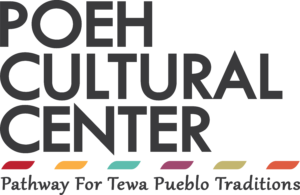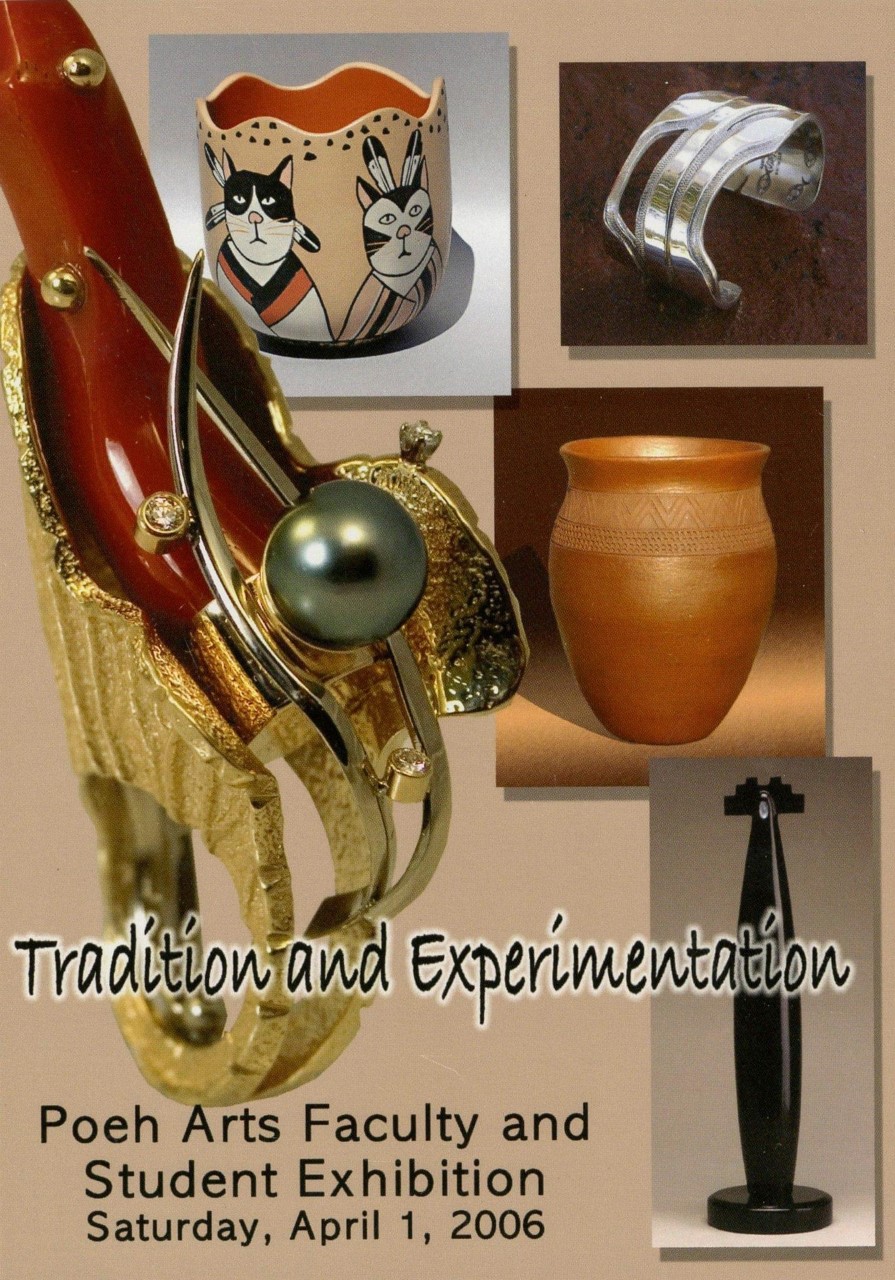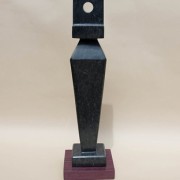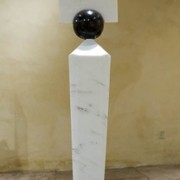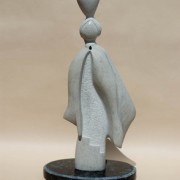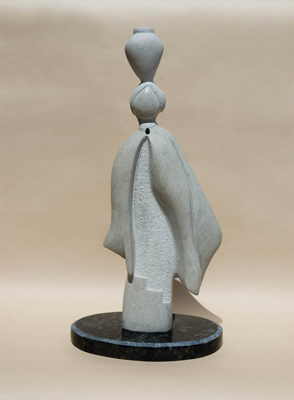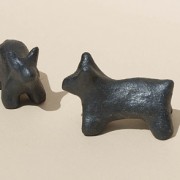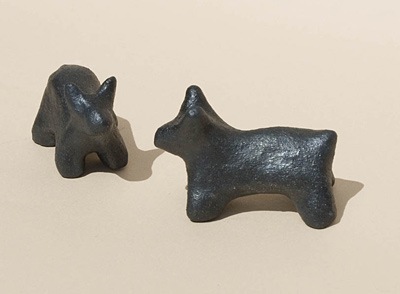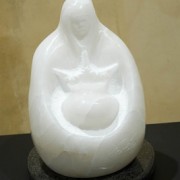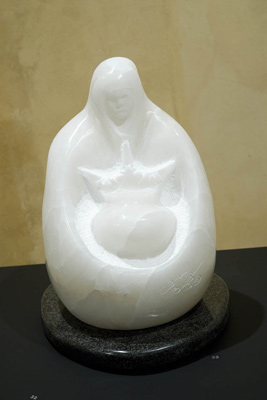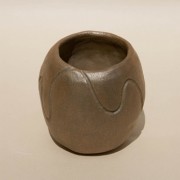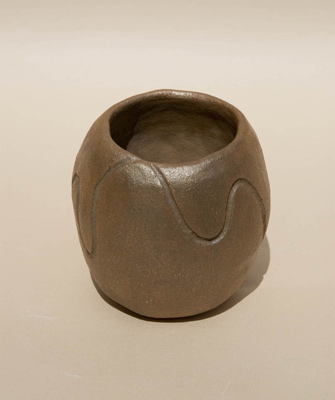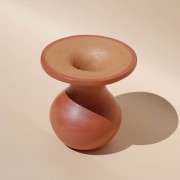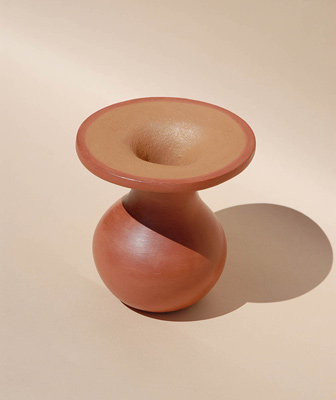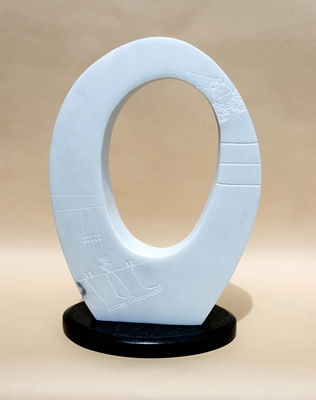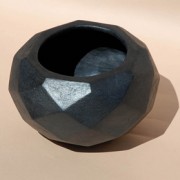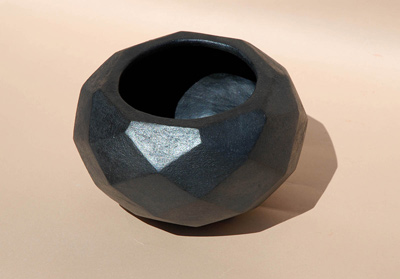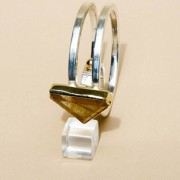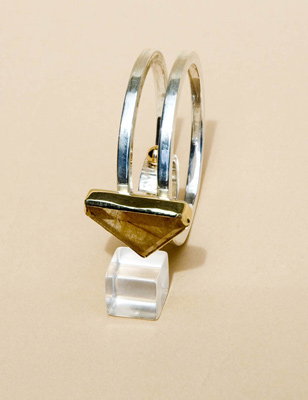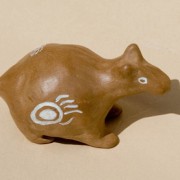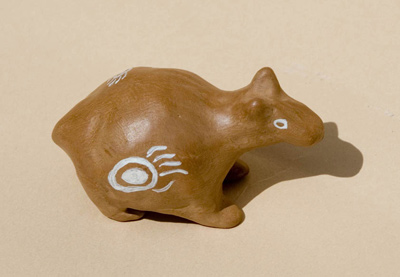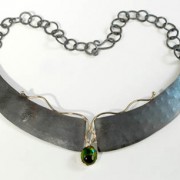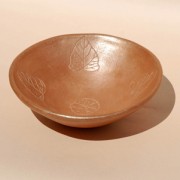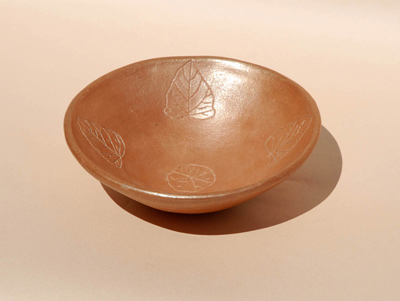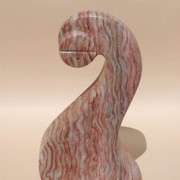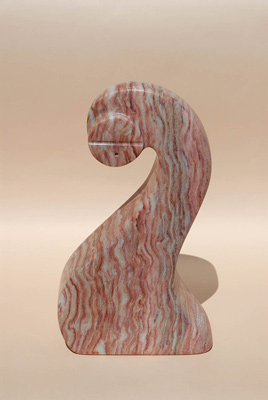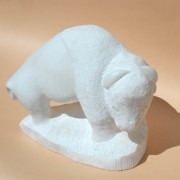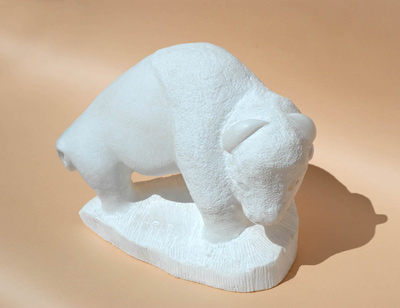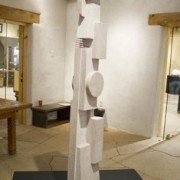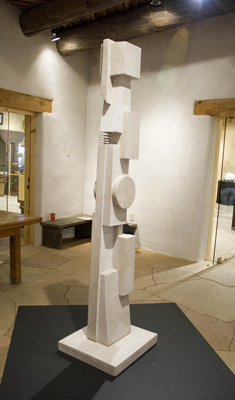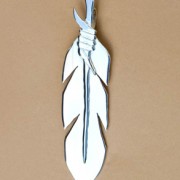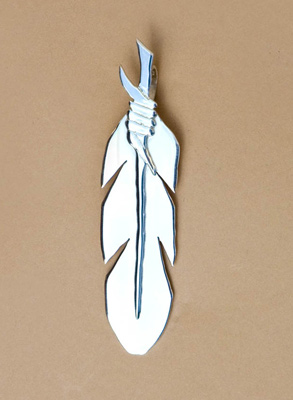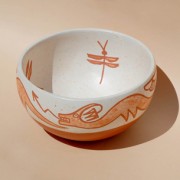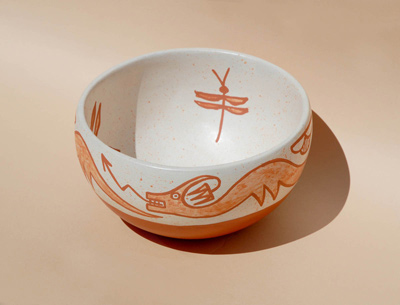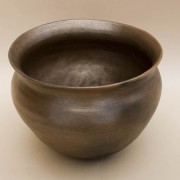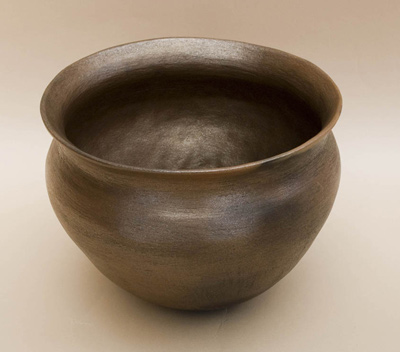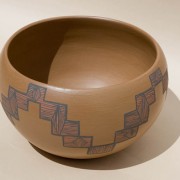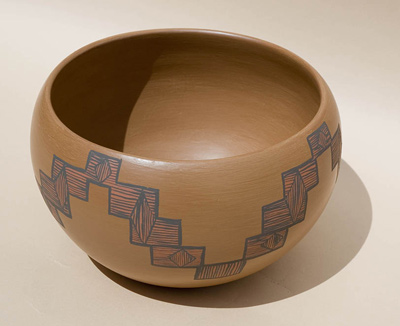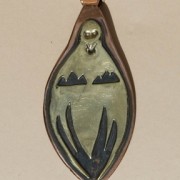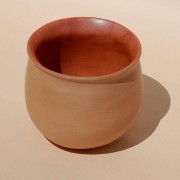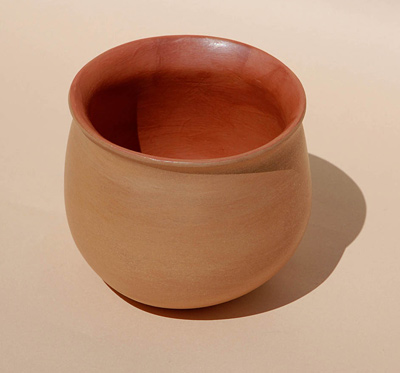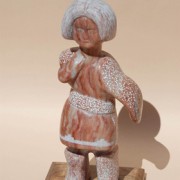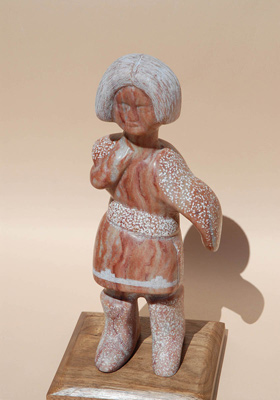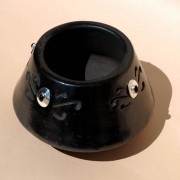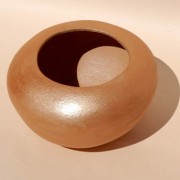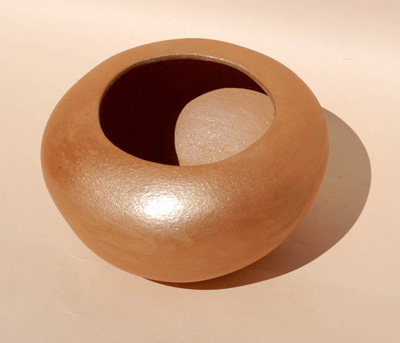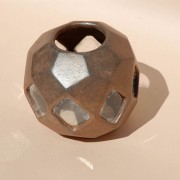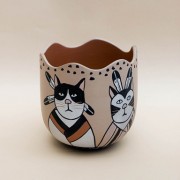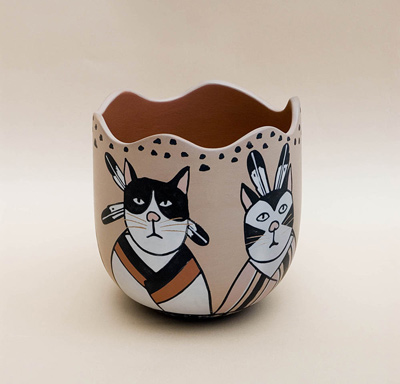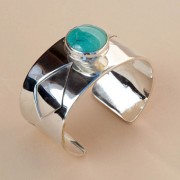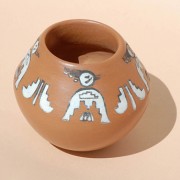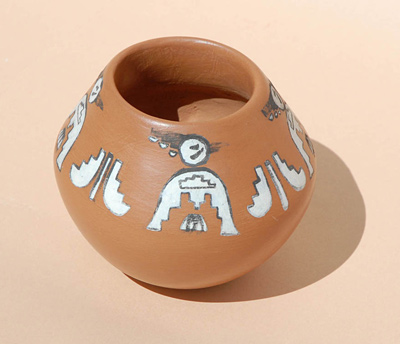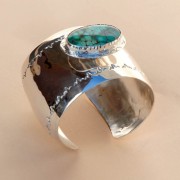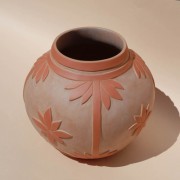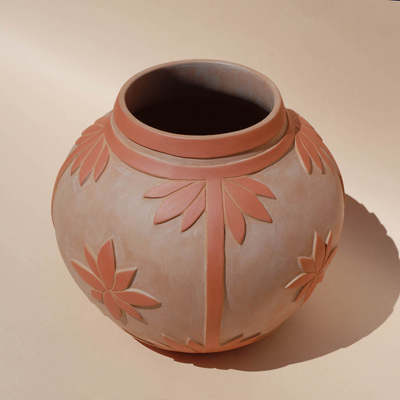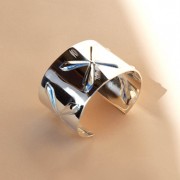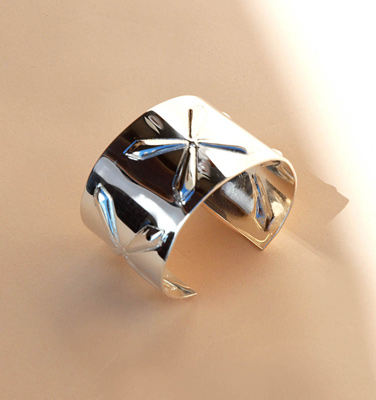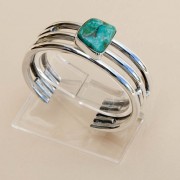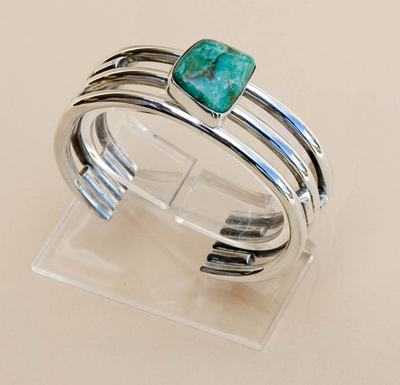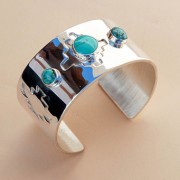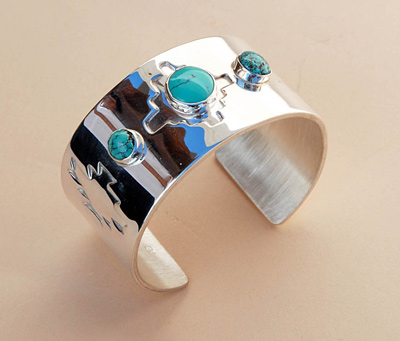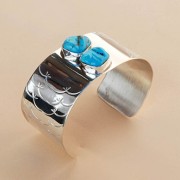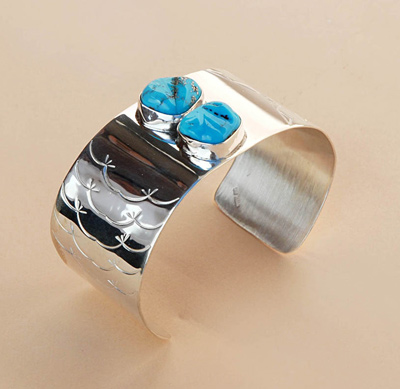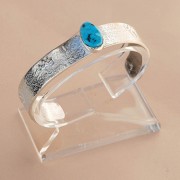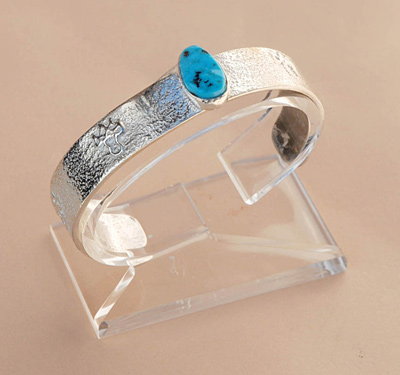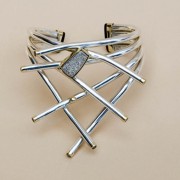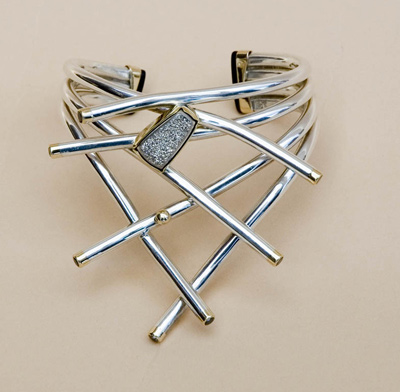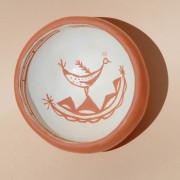An Exhibition of works by Poeh Arts Faculty and Students
April 1 – July 8, 2006
The Pueblo of Pojoaque Poeh Arts Program, also known as the Native American Vocational and Technical Education Program, has been providing art education to Native Americans living throughout Northern New Mexico since 1994. The vocational education classes in jewelry, pottery and sculpture are part of an economic initiative to create a “cottage industry” in art and tourism. The intent is to keep our people at home and in their communities, which keeps both vital while empowering students with art skills that regenerates the reliance upon natural resources and their own creativity. This reliance on our natural resources has been essential to the maintenance of our cultural values of harmony, sharing and providing our communities with necessary items such as pottery for ceremonies, jewelry for dances, and sculpture for architectural and aesthetic features in our homes and villages. Thus, art is rooted in our communities and passed from generation to generation over many centuries of cultural evolution.
In the Tewa language, there is no word for “art,” this is due to the fact that the art that we know today was not made to collect or display but to serve a function. By this, we mean that the pottery we made was for storing seeds, cooking, or for ceremonial use. Correspondingly, jewelry was significant not only for its beauty but for its manufacturing process. In the past, these materials were hard to come by and upon their completion, the coral, shell and turquoise necklaces and bracelets became family heirlooms.
The introduction of new materials (silver) and tools (forged hammers, chisels, and stamps) allowed indigenous artists the freedom to experiment with new designs and engage in non-traditional creative processes. Thus, indigenous artists began their “experimentation,” which combined old techniques with new methods of creation, which they also passed on and shared with younger generations. Despite this experimentation, if an artist is asked to make pottery for a ceremonial function, she/he is happy to oblige and give back to his community what they so purposefully shared with the artist – tradition.
Poeh Arts formalized this learning process by developing the intergenerational teaching methodology, which has become the keystone of creativity based on tradition and experimentation. Poeh Arts makes a myriad of tools and aesthetic facilities available to students along with guidance and instruction from Native master artists who espouse the ideal of sharing their knowledge with other community members.
The communities that develop within the art studios share the characteristic desire to learn traditional techniques while engaging in creative processes through experimentation to create contemporary art. The art that is created in these “microcosmic pueblo communities” are steeped in tradition and reveal a creative impetus that evokes both experimentation and a sense of timelessness that has defined the transmission of knowledge among our Pueblo people both in the past and in the future.
